#the only tallit i have is the one i got for my bat mitzvah where i was informed i could Not have any of the embroidered ones i liked.
Explore tagged Tumblr posts
Text
is there a reasonable market in, like, secondhand tallit? i want a new one that doesn't a. have rust stains b. give me severe dysphoria due to its delicate feminine embroidery, but i would really love to not give money to israeli judaica companies right now. and i also want it to be made of natural fibers and be nice to look at while im making demands
#the only tallit i have is the one i got for my bat mitzvah where i was informed i could Not have any of the embroidered ones i liked.#but i could have a delicate silver and lavender tracery pattern! which i have always hated and now also experience as an act of self-harm!#honestly almost the only time in my whole life that my parents actively enforced feminine gendered actions on me in a way i fully hated#which. is weird. because it was a tallit. which you'd think wouldnt need to be that gendered as things go#anyway. i tried the etsy ~vintage~ but i mostly saw ones i hated that seemed to be from dedicated bulk resellers which is not ideal either#can i. hire someone to make me a tallit. no because it will cost several thousand dollars to do that probably.#if i learn to weave. and buy a giant loom which i won't. will THAT be a kosher tallit?#i assume the answer is no because i don't believe in god#but that fact in itself would be pretty funny.#box opener
8 notes
·
View notes
Text
“Thirteen″ Tips for Writing About Synagogues / Jewish Writing Advice / Advice for Visiting Synagogues
So your story includes a Jew (or two) and you’ve a got a scene in a synagogue. Maybe there’s a bar mitzvah, maybe your gentile protagonist is visiting their partner’s synagogue. Maybe there’s a wedding or a community meeting being held there. For whatever reason, you want a scene in a shul. I’m here as your friendly (virtual) neighborhood Jewish professional to help you not sound like a gentile who thinks a synagogue is just a church with a Star of David instead of a cross.
Quick note: The are lots of synagogues around the world, with different specific cultural, local, and denominational practices. The Jewish community is made up of roughly 14 million people worldwide with all sorts of backgrounds, practices, life circumstances, and beliefs. I’m just one American Jew, but I’ve had exposure to Jewishness in many forms after living in 3.5 states (at several different population densities/layouts), attending Jewish day school and youth groups, doing Jewish college stuff, and landing a job at a Jewish non-profit. I’m speaking specifically in an American or Americanish context, though some of this will apply elsewhere as well. I’m also writing from the view of Before Times when gatherings and food and human contact was okay.
Bear in mind as well, in this discussion, the sliding scale of traditional observance to secular/liberal observance in modern denominations: Ultraorthodox (strict tradition), Modern Orthodox (Jewish law matters but we live in a modern world), Conservative (no relation to conservative politics, brands itself middle ground Judaism), Reconstructionist (start with Jewish law and then drop/add bits to choose your own adventure), and Reform (true build your own adventure, start at basically zero and incorporate only as you actively choose).
Synagogue = shul = temple. Mikvah (ritual bath) is its own thing and usually not attached to the shul. Jewish cemeteries are also typically nowhere near the shul, because dead bodies are considered impure.
A Bar/Bat/Bnai Mitzvah is the Jewish coming of age ceremony. Bar (“son”) for boys at 13+, Bat (“daughter”) at 12+, and Bnai (“children”) for multiples (i.e. twins/triplets/siblings) or non-binary kids (although the use of the phrase “Bnai Mitzvah” this way is pretty new). 12/13 is the minimum, 12-14 the norm but very Reform will sometimes allow 11 and anybody above 12/13 can have theirs. Probably a dedicated post for another time. Generally, however, the following will happen: the kid will lead some parts of services, read from and/or carry the Torah, and make a couple of speeches.
Attire: think Sunday Best (in this case Saturday), not come as you are. Even at very liberal reconstructionist/reform synagogues you wouldn’t show up in jeans and a t-shirt or work overalls. Unless they are seriously disconnected from their culture, your Jewish character is not coming to Saturday morning services in sneakers and jeans (their gentile guest, however, might come too casual and that’d be awkward). 1a. The more traditional the denomination, the more modest the attire. Outside of orthodoxy woman may wear pants, but dresses/skirts are more common. Tights for anything above knee common for Conservative/Reform/Recon, common for even below knee for orthodox shuls. Men will typically be wearing suits or close to it, except in very Reform spaces. 1b. Really, think business casual or nice dinner is the level of dressiness here for regular services. Some minor holidays or smaller events more casual is fine. Social events and classes casual is fine too. 1c. Even in reform synagogues, modesty is a thing. Get to the knee or close to it. No shoulders (this an obsession in many Jewish religious spaces for whatever reason), midriffs, or excessive cleavage (as I imagine to be the norm in most houses of worship).
Gendered clothing: 3a. Men and boys wear kippahs (alt kippot, yarmulkes) in synagogues, regardless of whether they’re Jewish or not out of respect to the space. Outside of Jewish spaces it’s saying “I’m a Jew” but inside of Jewish spaces it’s saying “I’m a Jew or a gentile dude who respects the Jewish space.” Outside of very Reform shuls, it’s a major faux pass to be a dude not wearing one. 3b. There are little buckets of loaner kippahs if you don’t bring your own and commemorative kippahs are given away at events (bar mitzvah, weddings). Your Jewish dude character not bringing or grabbing one is basically shouting “I’m new here.” 3c. Women are permitted to wear kippahs, but the adoption of a the traditionally masculine accessory will likely be interpreted by other Jews as LGBTQ+ presentation, intense feminism, and/or intense but nontraditional devoutness. Nobody will clutch their pearls (outside of ultraorthodoxy) but your character is sending a message. 3d. Tefillin are leather boxes and wrappings with prayers inside them that some Jewish men wrap around their arms (no under bar mitzvah or gentiles). Like with the kippah, a woman doing this is sending a message of feminism and/or nontraditional religious fervor. 3e. Additionally, prayer shawls, known as tallit, are encouraged/lightly expected of Jewish males (over 13) but not as much as Kippahs are. It is more common to have a personal set of tallit than tefillin. Blue and white is traditional, but they come in all sorts of fun colors and patterns now. Mine is purple and pink. It is much more common for women to have tallit and carries much fewer implications about their relationship to Judaism than wearing a kippah does. 3f. Married woman usually cover their hair in synagogues. Orthodox women will have wigs or full hair covers, but most Jewish woman will put a token scarf or doily on their head in the synagogue that doesn’t actually cover their hair. The shul will also have a doily loaner bucket.
Jewish services are long (like 3-4 hours on a Saturday morning), but most people don’t get there until about the 1-1.5 hour mark. Your disconnected Jewish character or their gentile partner might not know that though.
Although an active and traditional synagogue will have brief prayers three times every day, Torah services thrice a week, holiday programming, and weekly Friday night and Saturday morning services, the latter is the thing your Jewish character is most likely attending on the reg. A typical Saturday morning service will start with Shacharit (morning prayers) at 8:30-9, your genre savvy not-rabbi not-Bnai mitzvah kid Jewish character will get there around 9:30-10:15. 10:15-10:30 is the Torah service, which is followed by additional prayers. Depending on the day of the Jewish year (holidays, first day of new month, special shabbats), they’ll be done by 12:30 or 1 p.m. Usually. After that is the oneg, a communal meal. Onegs start with wine and challah, and commence with a full meal. No waiting 4-8 hours to have a covered-dish supper after services. The oneg, outside of very, very, very Reform spaces will be kosher meat or kosher dairy.
To conduct certain prayers (including the mourner’s prayers and the Torah service) you need a Minyan, which at least 10 Jewish “adults” must be present, defined as post Bar/Bat/Bnai Mitzvah. In Conservative/Reform/Recon, men and women are counted equally. In Ultraorthodox women are not counted. In Modern Orthodox it depends on the congregation, and some congregations will hold women’s-only services as well with at least ten “adult” Jewish women present.
In Conservative and Orthodox shuls, very little English is used outside of speeches and sermons. Prayers are in Hebrew, which many Jews can read the script of but not understand. Transliterations are also a thing. In Reform synagogues, there’s heavy reliance on the lingua franca (usually English in American congregations). Reconstructionist really varies, but is generally more Hebrew-based than Reform.
We’re a very inquisitive people. If your character is new to the synagogue, there will be lots of questions at the post-services oneg (meal, typically brunch/lunch). Are you new in town? Have you been here before? Where did you come from? Are you related to my friend from there? How was parking? Do you know my cousin? Are you single? What is your mother’s name? What do you think of the oneg - was there enough cream cheese? What summer camp did you go to? Can you read Hebrew? Have you joined? A disconnected Jew or gentile might find it overwhelming, but many connected Jews who are used to it would be like “home sweet chaos” because it’s OUR chaos.
In Orthodox synagogues, men and women have separate seating sections. There may be a balcony or back section, or there may be a divider known as a mechitzah in the middle. Children under 12/13 are permitted on either side, but over 12/13 folks have to stay one section or the other. Yes, this is a problem/challenge for trans and nonbinary Jews. Mechitzahs are not a thing outside of orthodoxy. Some older Conservative synagogues will have women’s sections, but no longer expect or enforce this arrangement.
Money. Is. Not. Handled. On. Shabbat. Or. Holidays. Especially. Not. In. The. Synagogue. Seriously, nothing says “goy writing Jews” more than a collection plate in shul. No money plate, no checks being passed around, even over calls for money (as opposed to just talking about all the great stuff they do and upcoming projects) are tacky and forbidden on Shabbat. Synagogues rely on donations and dues, and will solicit from members, but don’t outright request money on holidays and Shabbat.
Outside of Reform and very nontraditional Conservative spaces, no instruments on Shabbat or holidays. No clapping either. Same goes for phones, cameras, and other electronics outside of microphones (which aren’t permitted in Orthodox services either). 11a. In the now-times an increasing number of shuls have set up cameras ahead of time pre-programmed to record, so they don’t have to actively “make fire” which is “work” (this is the relevant commandment/mitzvah) on Shabbat, so services can be live-streamed. 11b. After someone has completed an honor (reading from the Torah, carrying the Torah, opening the ark, etc), the appropriate response is a handshake after and the words “Yasher Koach” (again, Before-Times).
Jewish services involve a lot of movement. Get up, sit down. Look behind you, look in front of you. Twist left, twist right. A disconnected Jew or gentile visitor would be best off just trying to follow along with what an exchange student we had once termed “Jewish choreography.” Some prayers are standing prayers (if able), some are sitting prayers. It’s just how it is, although a handful of prayers have variations on who stands.
#jumlbr#jewblr#jewish#jewish writing help#jewish writing#jewish characters#writing jewish characters#jewish representation#writing advice#writeblr#writing jewish spaces#how to write synagogues#another long one sorry not sorry
228 notes
·
View notes
Text
follow up to that (absurdly popular??) Jewish Near post, I have headcanons:
for his first several days at Wammy’s he refuses to eat anything but peanut butter sandwiches and at first the staff assumes it’s an Autism Thing and then someone thinks to ask and Near just looks at them and says “everything else is treif” and they’re like oh shit! he’s not autistic, he’s Jewish!
he’s both, asshole
he and Mello don’t get along from the beginning--but they do develop a sort of grudging respect/identification with each other because they’re usually in the chapel at Wammy’s for the same time every morning to pray Shacharit and Lauds. neither of them are observant enough to pray every daily service, but the ritual of beginning the day is comforting
when he has his bar mitzvah, you bet your tuchus he does the Torah reading for every single parsha and the haftarah. his cantillation leaves something to be desired, but his pronunciation is flawless.
^^ I just realized this is a Very Jewish bullet point, so for gentiles reading this--the Saturday morning Torah reading is divided into seven different sections, and then an excerpt from the other parts of the Bible, which are read in Hebrew using a particular type of melodic chanting. it’s very difficult because Hebrew is written without vowels s ll th wrds lk lk ths, and nowadays many bar/bat mitzvah children will only learn the very last section. not so our boy, although I don’t think he bothers with the melody all that much.
he doesn’t go to synagogue a lot, but he does pick a day to observe the anniversary of his parents’ death, and will go every year to say the memorial prayer for the dead. he also goes on Yom Kippur and, later, on the anniversary of Mello and L’s deaths as well.
this is my only directly-contradicted-by-canon thing, but! Near wearing a tallit katan and stimming with the tzitzit (fringes). both very Near (hair-flipping, anyone?) and very Jewish (I think I’m playing with my tzitzit 75% of the time I’m wearing my prayer shawl)
regarding a belief of God, he’s in that weird space a lot of Jews occupy where they’re not either hardcore believers or nonbelievers according to a Christian framework. he’s not 100% sold on the existence of a God, and even if he was, his response would basically be “stay in your lane,” as per canon, but that doesn’t make Judaism as a religion any less important to him
PUZZLE MENORAH
over time, he amasses a truly impressive dreidel collection
Near is that guest you never want to have at your seder because he legit wants to have long discussions about all the philosophical questions raised in the haggadah. everyone else is glaring daggers and just wants to EAT ALREADY and Near’s stuck in a heated discussion with a rabbi about whether the plagues were really that necessary.
rugelach is his trademarked favorite food but he will not turn up his nose at a good bagel. haven’t decided if I headcanon Gevanni as also Jewish, but he is def. a native New Yorker and he and Near bond over the glory that is bagels and lox. this bullet point inspired by how much I’m dying for a bagel and lox rn.
he doesn’t actually know much about his birth parents and no one is really sure what his Hebrew name is. they assume Nathaniel is part of it, so he goes by Nathaniel bat Avraham Avoteinu [v’Sarah Imoteinu]--Nathaniel, son of our father Abraham and our mother Sarah. it’s how converts to Judaism are often named, and he finds it fitting than, as an orphan, he can at least claim the mother and father of the entire Jewish people.
I have more but gosh this got long very quickly
4 notes
·
View notes
Text
5/9-15: Went Chicagoan Jewish for a Day (or not really) (aka ‘antek-antek Yahudi!’ as some jerk would say)
33rd WEEK, MAY 9-15, 2016.
Many exciting things happened this week.
But I have the right to prioritize which one deserves to be mentioned first.
This Thursday, I finally (finally) watched Captain America: Civil War.
And if you’re reading this blog for quite some time, it can be seen that I am sort of a hardcore MCU fangirl. At least compared to my friends.
I just died watching the movie. Imagine my heart is an egg and the movie screenwriters and actors were some extremely good scrambled egg makers.
I just can’t.

I cussed and swore so much during the movie, even though I was there by myself (actually—it’s because I was there by myself), and just being emotional in my own little world. By the time the movie was over entirely, I didn’t even have the mood for anything. I was either about to explode or just melt and let myself washed away to the drain and to the Puget Sound. And never come back again.
Huh. I wish my fangirl fellow Darin or Ica was here. They have been the only ones qualified enough to talk the shit out of any marvel movies with me. We can handle each other, and other people, apparently, just can’t handle or understand me being emotionally overwhelmed over some fictional stuff.
Anyway.
Summer is approaching, and on Wednesday the 11th the day hit the thermostat a good 26 Celcius, so after school I went to Capitol Hill and bought myself an unapologetic cup of frozen yogurt across the street from Seattle Central.

However, the highlight of the week, like with almost all cases, came on the weekend.
Karen’s nephew, Gabe, was having his bar mitzvah that weekend. Good news: his family, of course, invited Karen and her family over for it. Good news #2: Karen’s sister and her family lived in Chicago, IL.

Hell yeah! It’s not everyday you can go to big cities like Chicago (unless, well, you live in or nearby Chicago) AND go to a bar mitzvah (unless, well, you happen to have a lot of Jewish relative or friends).
For those who haven’t known, bar mitzvah (or bat mitzvah, for female) is a coming-of-age ritual, meaning a ritual that marks a young person’s transition from being a child to being an adult, that is practised by the Jews—
“Jews?!”
—is probably what your response would be if you’re a typical, religiously conservative Indonesian Muslim who credit most of your knowledge to controversial-titled articles on Facebook that are shared by friends from exclusively your own circle.
But I’m getting ahead of myself, and I’m not supposed to talk about my tolerant/intolerant country in this entry, so let’s get back to my main point.
Gabe here was 13 years old, so, in order to mark his coming to adulthood, a bar mitzvah was held. Let’s say... uhm, a bar mitzvah is an equivalent to Indonesian ‘khitanan’, a ritual after a boy’s circumcision to celebrate his first steps to adulthood.
Karen and Eric and I left Seattle in the afternoon, which means I had to leave school a couple hours earlier to catch the plane. After we arrived, we rented a car and drove to the hotel. Later at night, I finally met Ayesha, Karen’s mother, and us four spent some time talking.
Saturday morning, we went to Downtown Chicago to have breakfast and walk around. We crossed the Chicago River and passed by the Trump Tower. But our main destination was Millenium Park.
You see, when I thought of Chicago, I thought about this particular piece of art I wanted to see for myself. It was this sculpture, sitting right in the middle of the park. The sculpture has a power to amaze everyone who sees it, and at the same time providing a new perspective to see the Chicago skyline and the buildings surrounding it. Designed by an Indian-British artist Anish Kapoor in 2004, the stainless-steel sculpture was initially and officially named “Cloud Gate”. Thanks to public’s creativity and appreciation of its shape, the sculpture is more widely known as... The Bean.

To be fair, it DOES look like a bean. However, I felt somewhat sorry for the artist that had surely thought about the philosophy behind the name Cloud Gate and how the name will inspire people and all that. But I guess the first time people saw the sculpture, they went “oh, it looks like a giant bean!” hence the name.
Think about nicknames that you give to your friends or that have been given to you by your friends. It’s like how a person is named Richard, but everyone just end up calling him Dick. Or a name as pretty as Zahra but everyone end up calling her Ijah. Or something like that. There are indeed some people in my school who are so widely known by their nicknames, anyone hardly know what their real, birth names are.
However, in any way, The Bean (or Cloud Gate, whatever) is so pretty, no matter the weather. It can be sunny or cloudy and it still manages to reflect the whole scenery around it perfectly.
And right under the bean structure was ever crazier. The structure was bent and shaped in such a way that it provided multiple reflections of you in different forms, like a kaleidoscope. Looking at it was hypnotizing, and making me dizzy if I stared at it for too long.
Oh, and it’s cool that I could see the photographer in the picture because he was reflected by the bean behind me. Ehe.
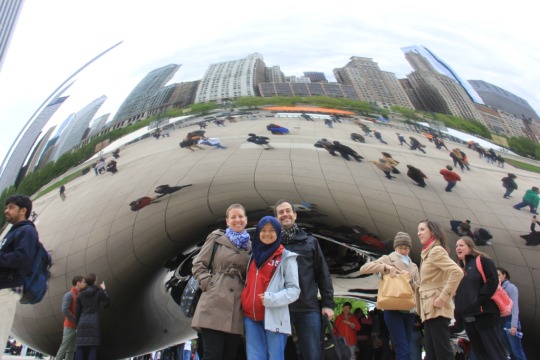
Then we moved to the next block, the next cool thing about the city, the Art Institute of Chicago. (which is what we could cram in a day of Chicago) More than a place where people study—like the sound ‘Institute’ gives—it was more like a museum, like the Met. It had everything in there, for real.

I would say that the Met has more complete collection than Art Institute of Chicago just because the Met is more famous and the whole building is probably as vast as my neighborhood back home, but AIC contained a lot of artefacts and other kinds of old stuff from different times and places, like Ancient Greece and Roman Empire. There were also extensive collections from the Middle East during the rise of Islam, from India, Africa, China, and Europe, with artefacts related to their respective culture and certain religion the region was dominated by.

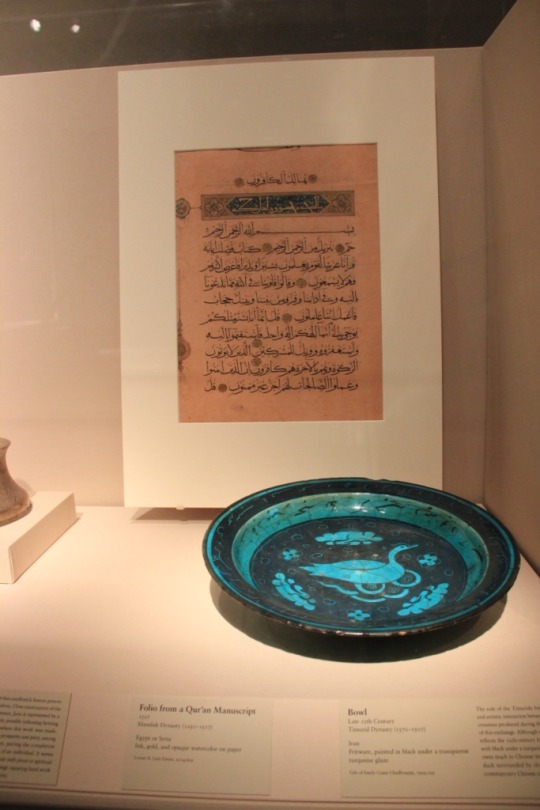

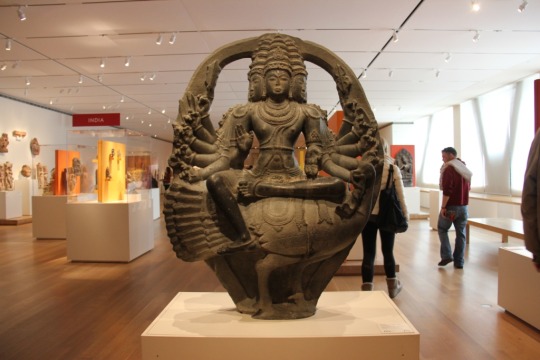
I’m a statue person, and most likely not a painting person. Seriously, though, my art senses are probably dull enough that I don’t enjoy paintings as much as people do in general (especially those of abstract paintings). Thus, what I did when Eric and Karen and pretty much everyone in the room were philosophically and emotionally connected to an acrylic representation of grass, I took pictures of them.
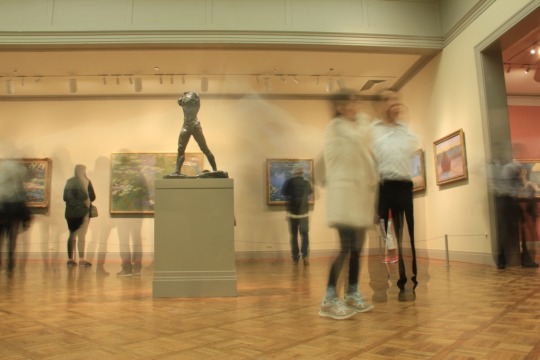
Alright. Time to bail as evening was approaching and we needed to be at Karen’s sister’s house for dinner before the ceremony. Karen told me to dress real formal—because maybe last time they took me to a formal event—that was a wedding—I wore a cardigan over a long-sleeved shirt and—wait for it—a pair of sneakers. Karen made sure I did NOT wear sneakers (or shirts) for the bar mitzvah, and thus, left me with the only acceptable shoes I had: a painful pair of high high heels. It was black and fancy and I looked good in it, but it was for sure after the event I decided to throw those elegant representation of hell.
When we got to the venue, it became clearer that it was indeed a black tie event. Good thing about having a dinner party with the Jews: kosher food! Kosher is like food guidelines for Jews, the same way us Muslims categorize food and beverages into halal or not halal. Now, I don’t know the full scope of what makes a food or beverage kosher, but I do know that both kosher and halal guidelines strictly and entirely prohibit swine (or any kind of pig product), and that is good enough for me in this kind of situation.
Quick tip: when you’re in the US and is really self-conscious about your belief in halal diet, if you can’t find a proven halal food, look for kosher ones. (especially for products in packaging like salt or biscuits and such kinds, finding a kosher mark in the packaging is good enough if you can’t find products with halal mark on it)
After dinner we moved with our respective vehicles to the synagogue for the ceremony. Synagogue is a Jewish house of prayer. Before we entered the main room, the men were given this small head covering—that was so small it didn’t really cover the whole head—that I’d later figured is called a kippah. Gabe, the man of the hour, besides wearing a kippah himself, also wore a kind of prayer shawl called tallit.
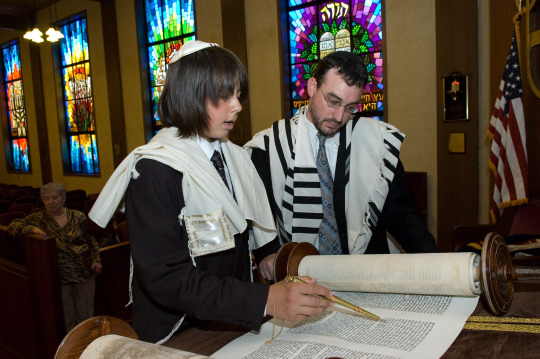
(illustration--photography was not allowed during the ceremony--at least the one i attended)
During the ceremony, there were chants and songs—in Hebrew—but the main event was the reading of the Torah—big rolls of Jewish scriptures. Presumably just about everyone in the room paid attention to the reading but me, but to be honest it’s not even easy for me to concentrate when an imaam—the leader of a Muslim prayer, when done collectively—recites long verses of the Quran during prayers (being able to read and write Arabic doesn’t help when you can’t understand the language itself), let alone a set of long verses in Hebrew. So what does a girl with zero understanding of the Torah and a quite short attention span do during this time?
She decided to open the holy book in front of her seat and tried to decipher the Hebrew alphabet.
Prepare for a quick elaboration on her observation regarding Hebrew and its comparison to Arabic. (<--calon judul skripsi S1 Sastra Arab/Ibrani)
I guess now I understood why people who don’t understand Arabic see nothing but unreadable wiggly lines—even I’ve heard people said to me that all the scribbles look the same. It took a while for me to figure out that Hebrew and Arabic have pretty much the same system. (uhhh I don’t know how to explain this. But like in Arabic a letter needs to have an accent that serves as a vowel, in order for the letter to be readable. So, for instance, if there is a certain accent above the Arabic letter ‘s’, that accent’ll give an ‘aah’ sound so the letter will be read as ‘saa’. Another accent gives the ‘ooh’ sound, hence ‘soo’, and another gives the ‘eeh’ sound, hence ‘see’) (why am I suddenly giving Arabic lessons)
Anyway, it’s not exactly the same, but some letters in Hebrew, if accompanied by certain accents or additional wiggly line, will be read differently than without accents.
(I can’t give you an example) (because by the time we all got home in Seattle I already forgot the whole thing) (not that you asked for one anyway right)
(well, I guess it would be kind of cool if I preserved on deciphering Hebrew. Albeit the language itself I can’t understand, at least I can write things I don’t want people around me to know in Hebrew letters)

After the whole ceremony ended, we moved to another room, which was a vast hall, where we had dinner (again) and heard speeches and overall celebrated Gabe’s first step into adulthood. Pictures would’ve been cool, but photography weren’t allowed during such ceremony.
The next day, on a nice Chicago Sunday morning, all the family members gathered in a cafe for brunch. Got into some more talking with Karen’s extended family members, since I didn’t do so much talking during dinner the previous day.
It was quite a small place for such a big family and it wasn’t as easy to move around, but I got to one point where I met one of Karen’s family members (I forgot who, sorry) who happened to be the heart surgeon for Indonesia’s back-in-the-day famous General A.H. Nasution. (General Nasution was a member of the military who was lucky to escape the terror attack from rogue members of Indonesian Communist Party in 1965) (it took a while for me to figure out when he was telling me he did a surgery for Nasution, because apparently if you pronounced the name ‘Nasution’ the English way it sounds waaaaaay different than the Indonesian way)
As if it weren’t enough, I met Karen’s brother-in-law and he told me he’d met Indonesian former president Susilo Bambang Yudhoyono. Give me a break. I technically live closer to President SBY and I’ve never seen the guy live, or even General Nasution.
(well, probably NOT General Nasution, as the guy had died long ago)
We went back to the hotel and took off to the airport right after, Karen’s mom Ayesha came with us to the airport so she could tell me about my personality and prospect for the future through my birth date and place and chakra flow. Accompanied by good thick Chicago pizza. Mmm.

It wasn’t exactly a trip to Chicago a tacky tourist like me would expect because we barely got around Chicago, because it really isn’t a tacky tourist kind of trip, but a family event. Nonetheless, if I think wide and positive enough, chances of me visiting Chicago as a tacky tourist is bigger than chances of me attending a bar mitzvah. Therefore, one shall not remorse on being unable to explore Chicago, because one can always come back.
(aamiin)
(brb melamar jadi buruh cuci tetangga)
And I shit you not, the experience of attending a bar mitzvah is one of the most impressive point in my exchange year I will always remember. Thinking about the time where I could casually walk into a synagogue without being questioned (maybe Karen gave a heads-up to the family, I assume?), and imagining how a Jew—or anyone else, for that matter—should always be treated the same way if the situation were to be reversed.
Peace out.
Salam dari yang baru pakai high heels dua kali langsung dibuang,

Nabila Safitri.
1 note
·
View note